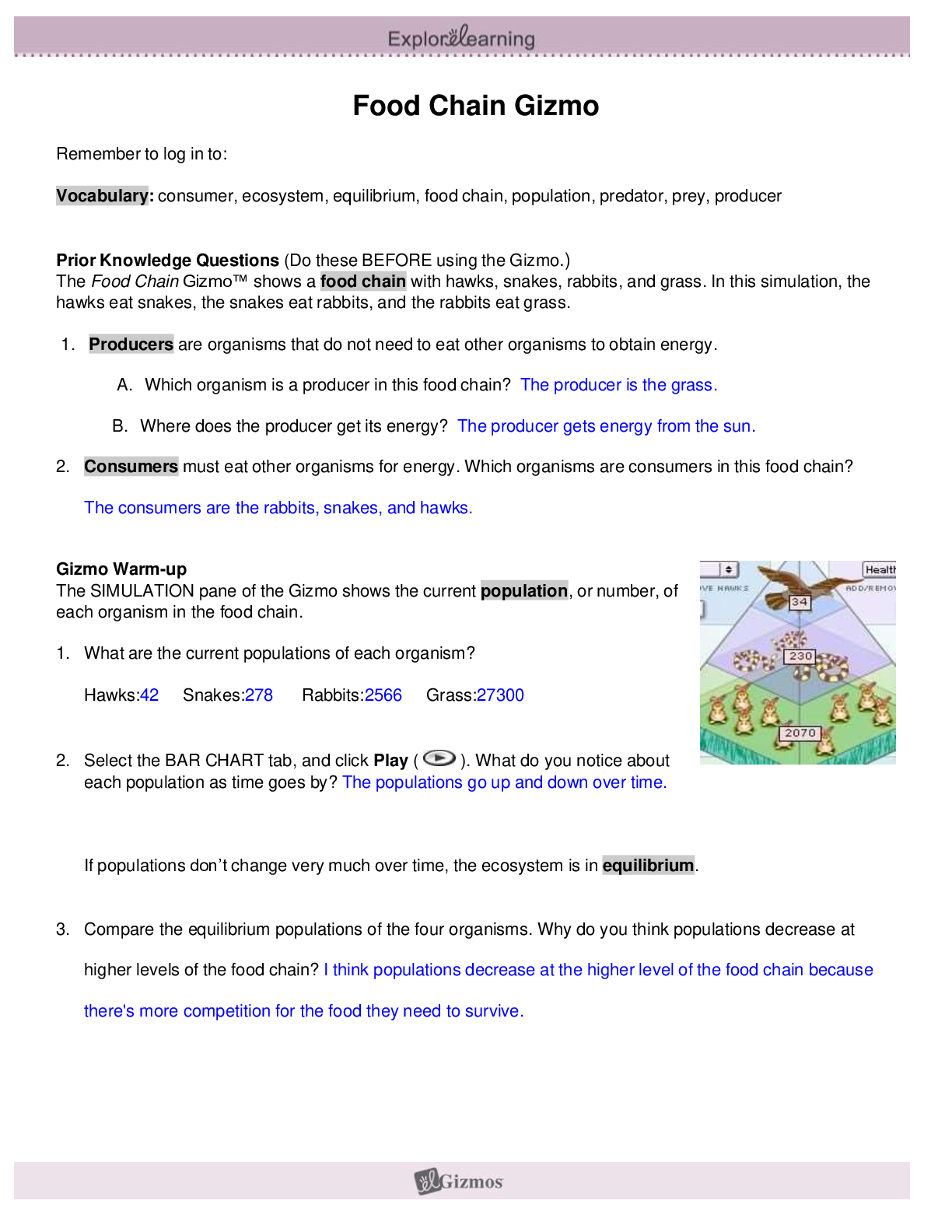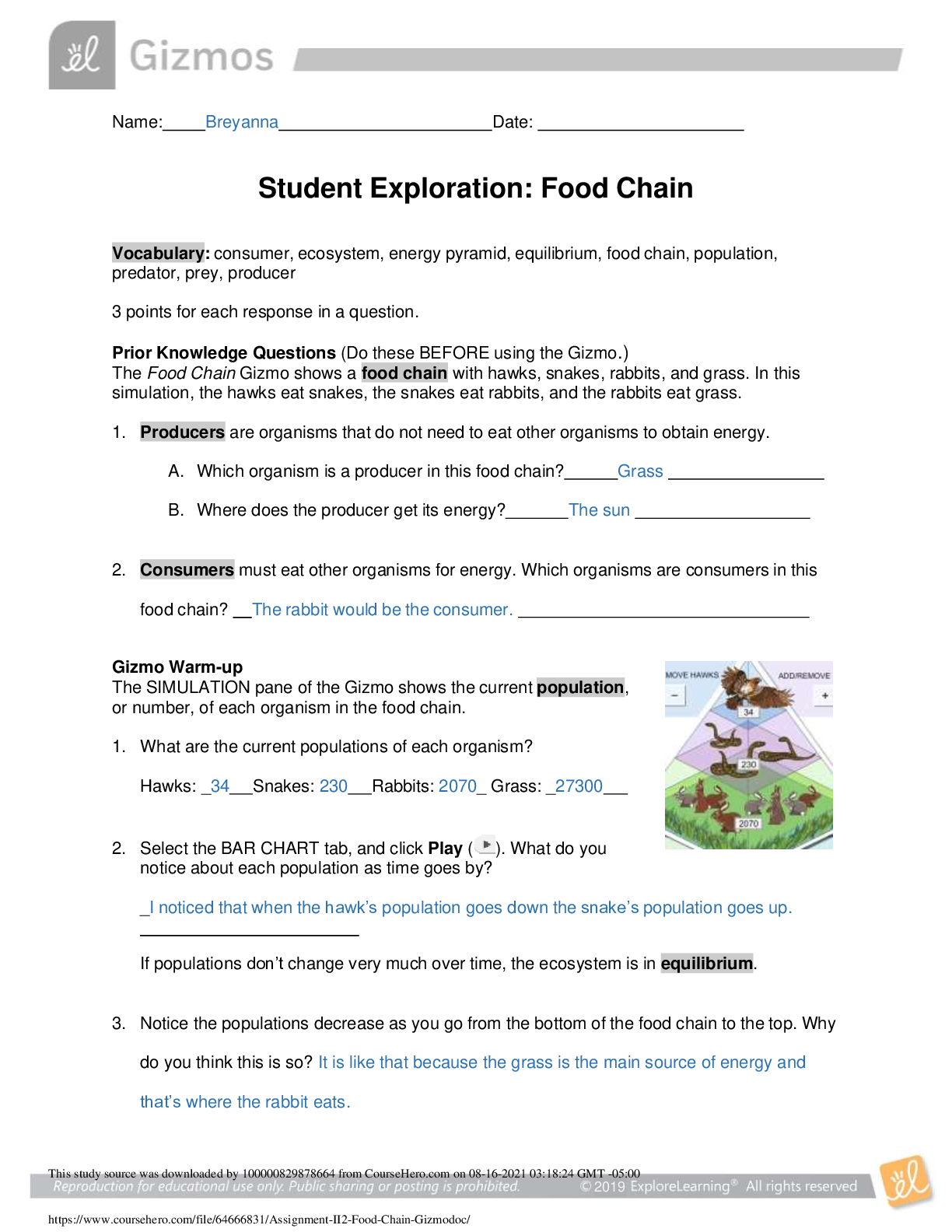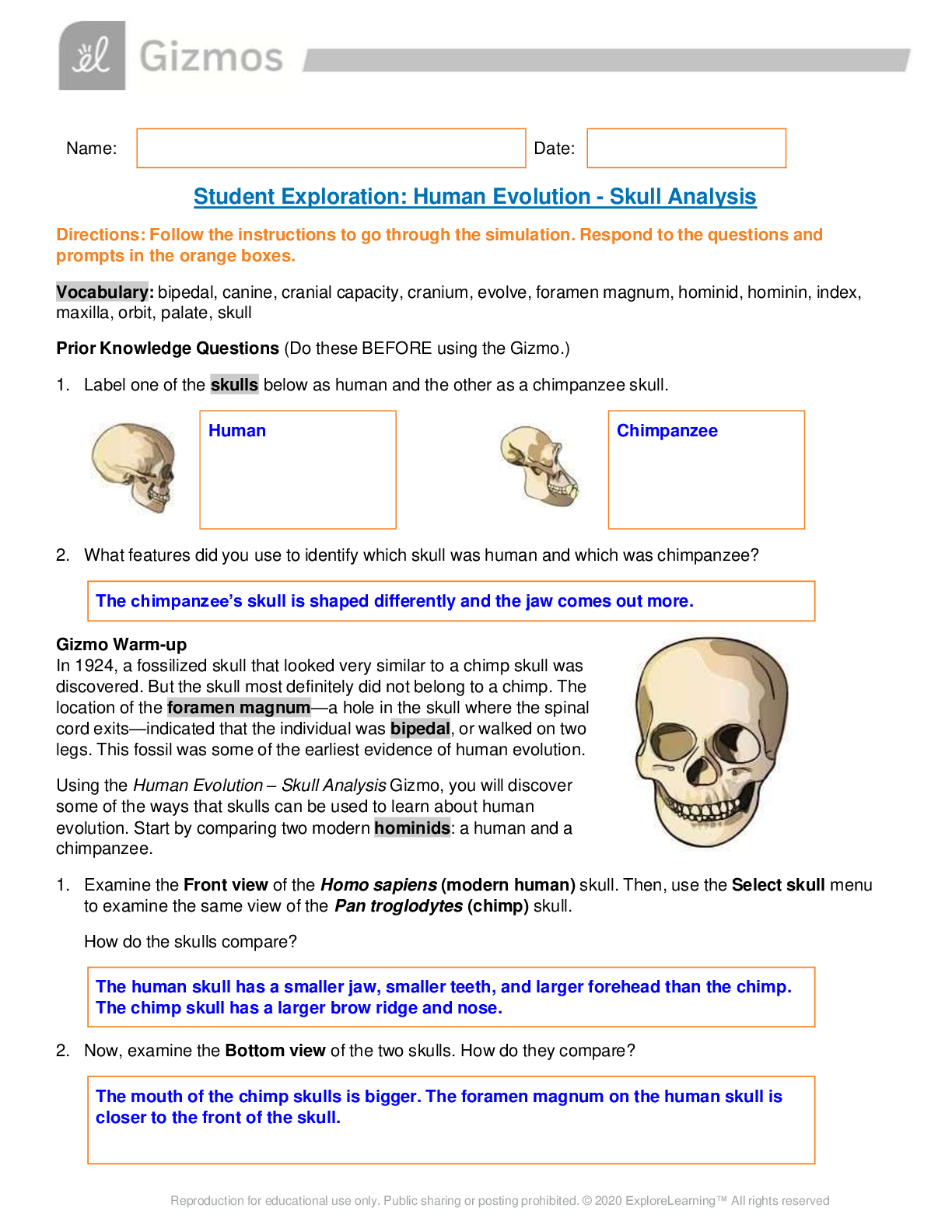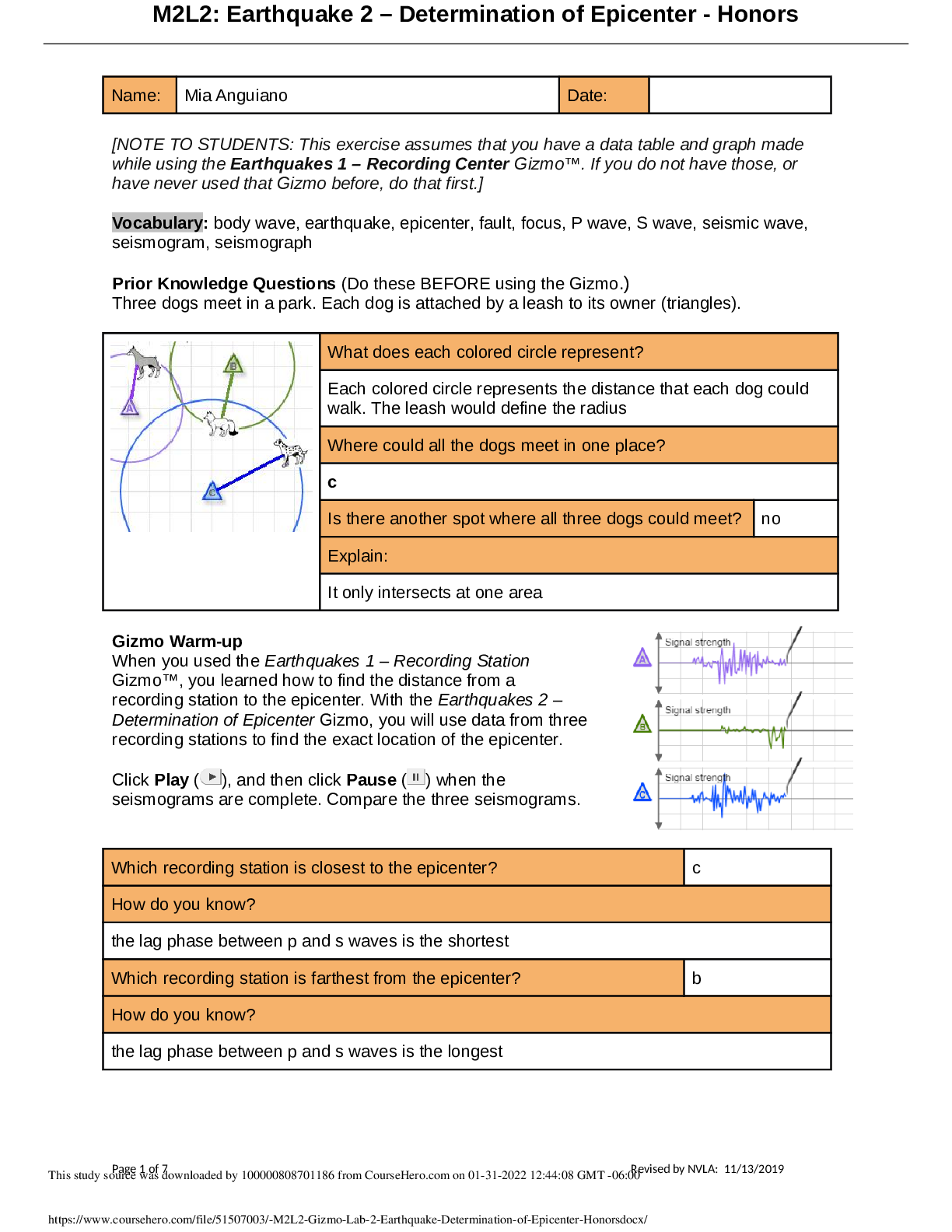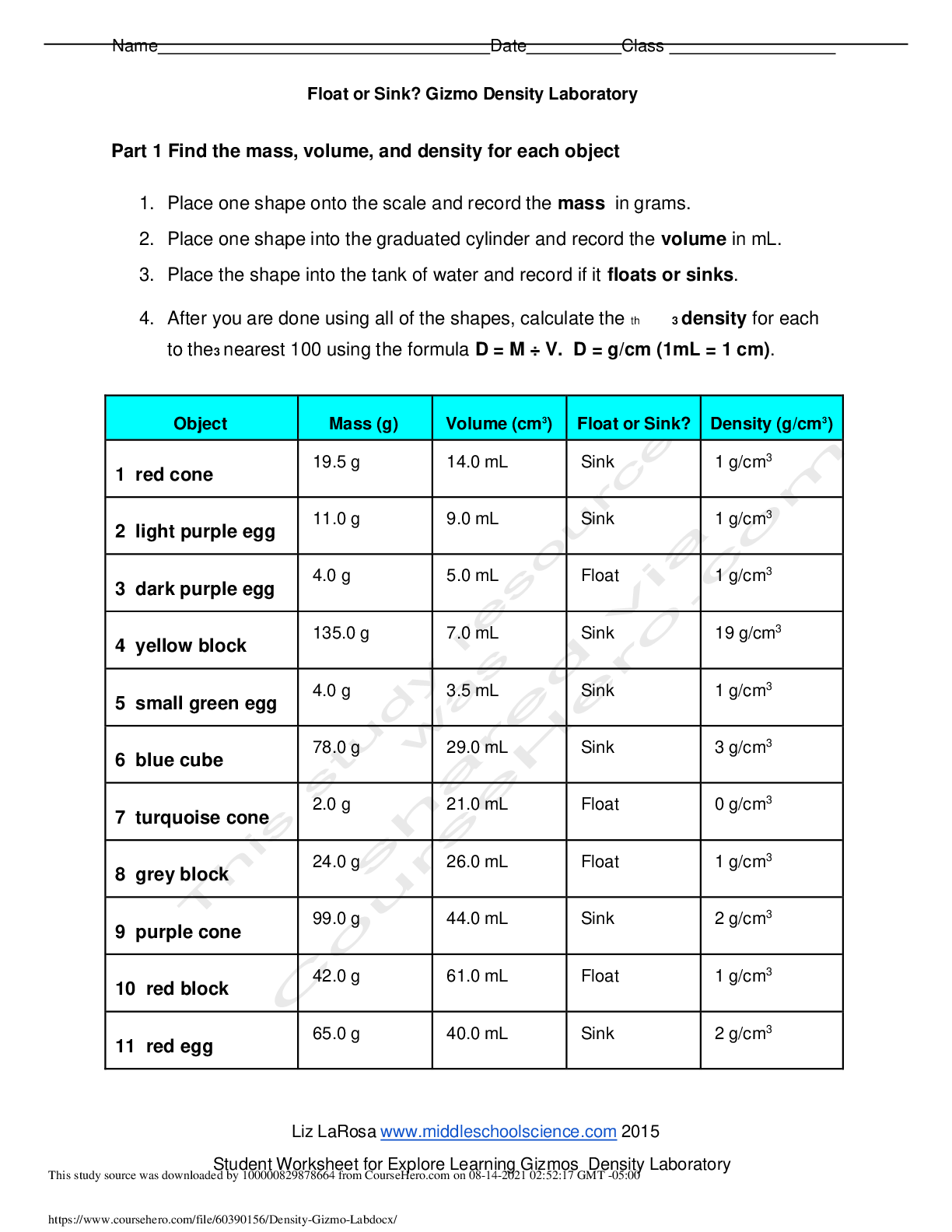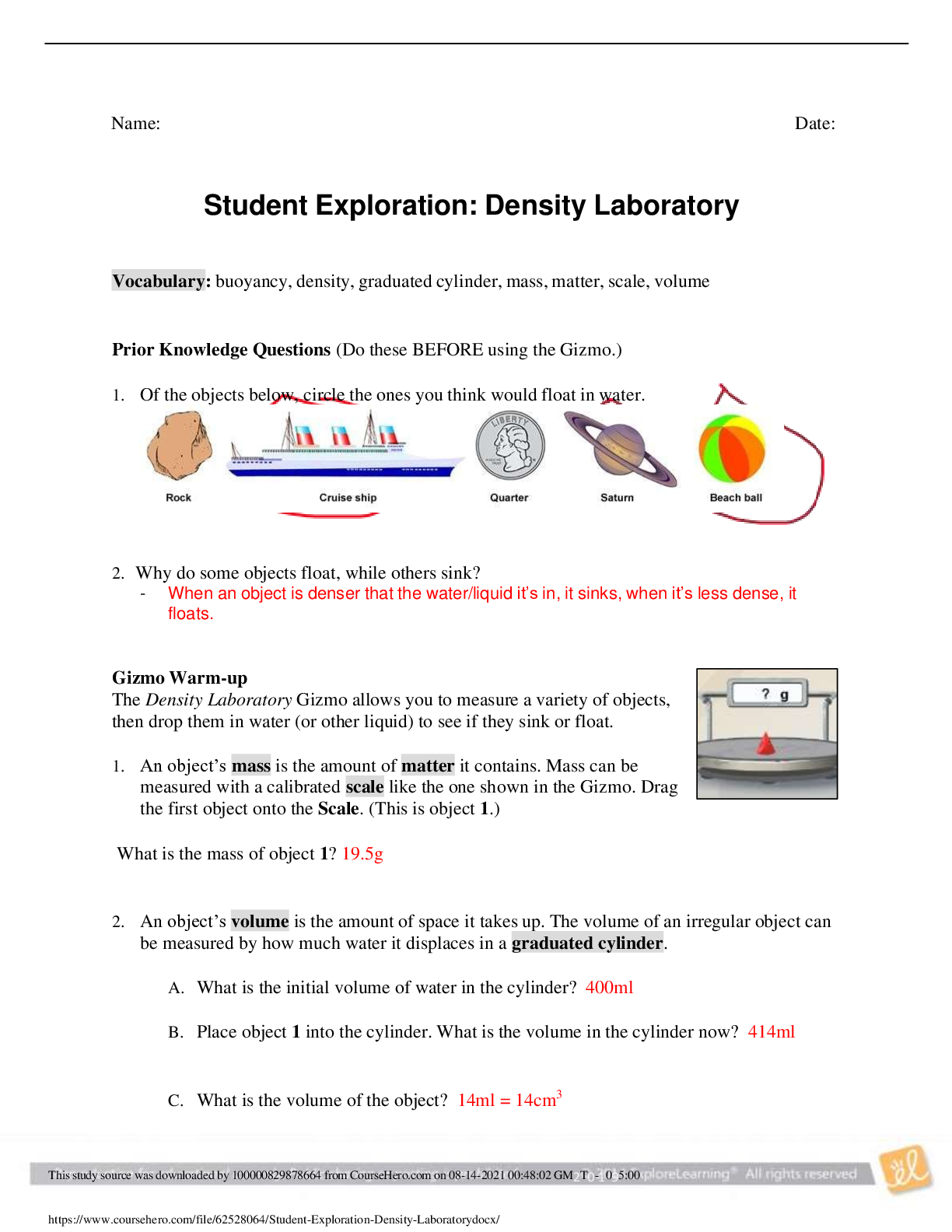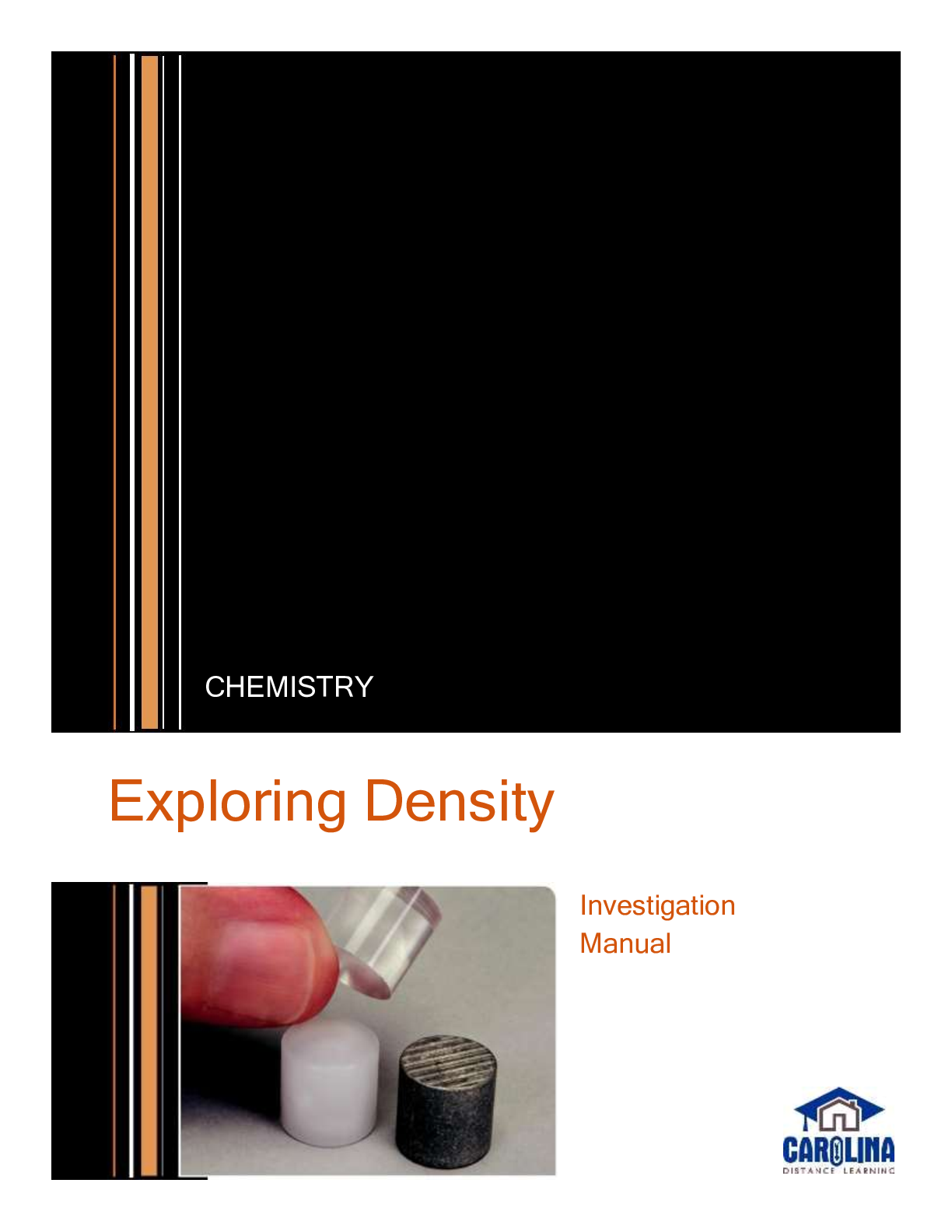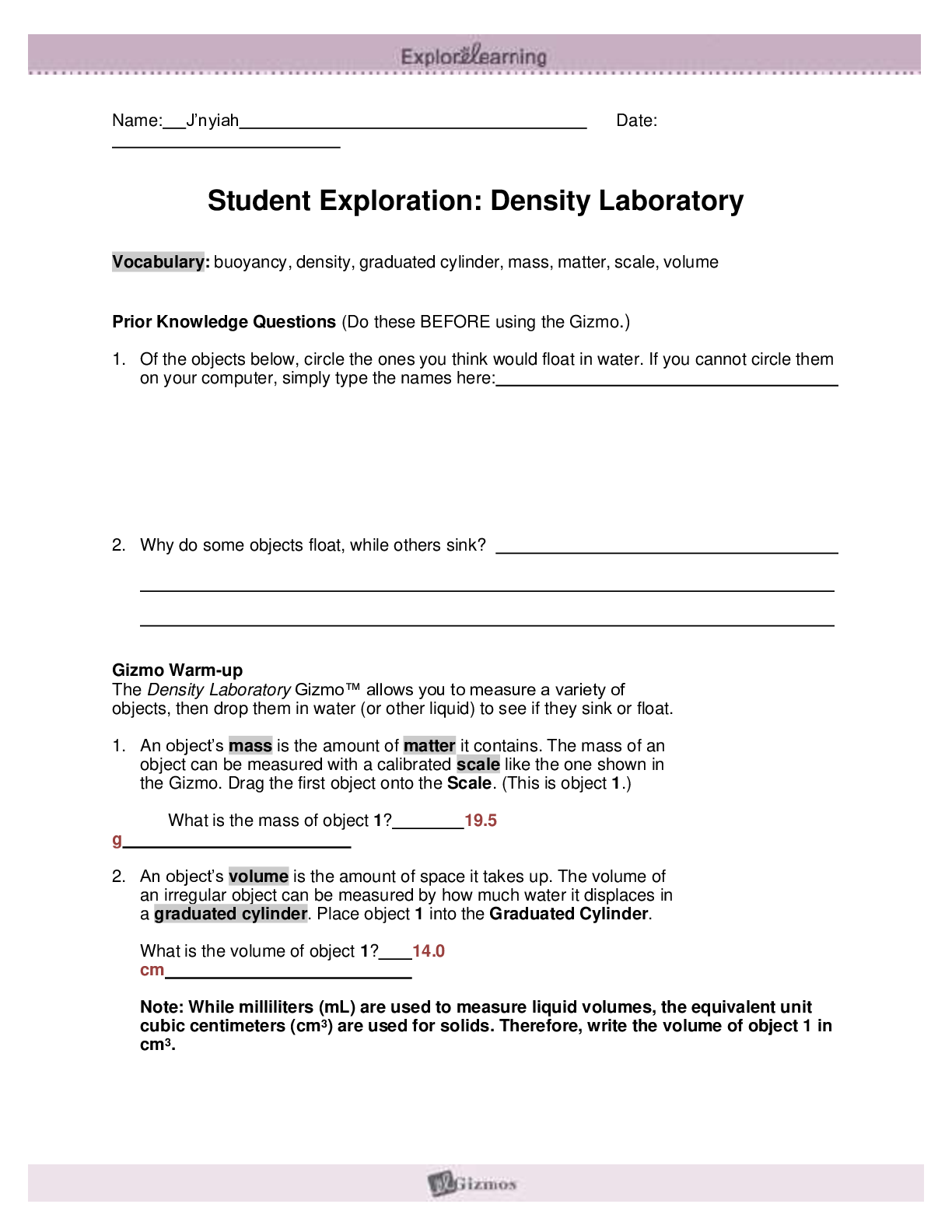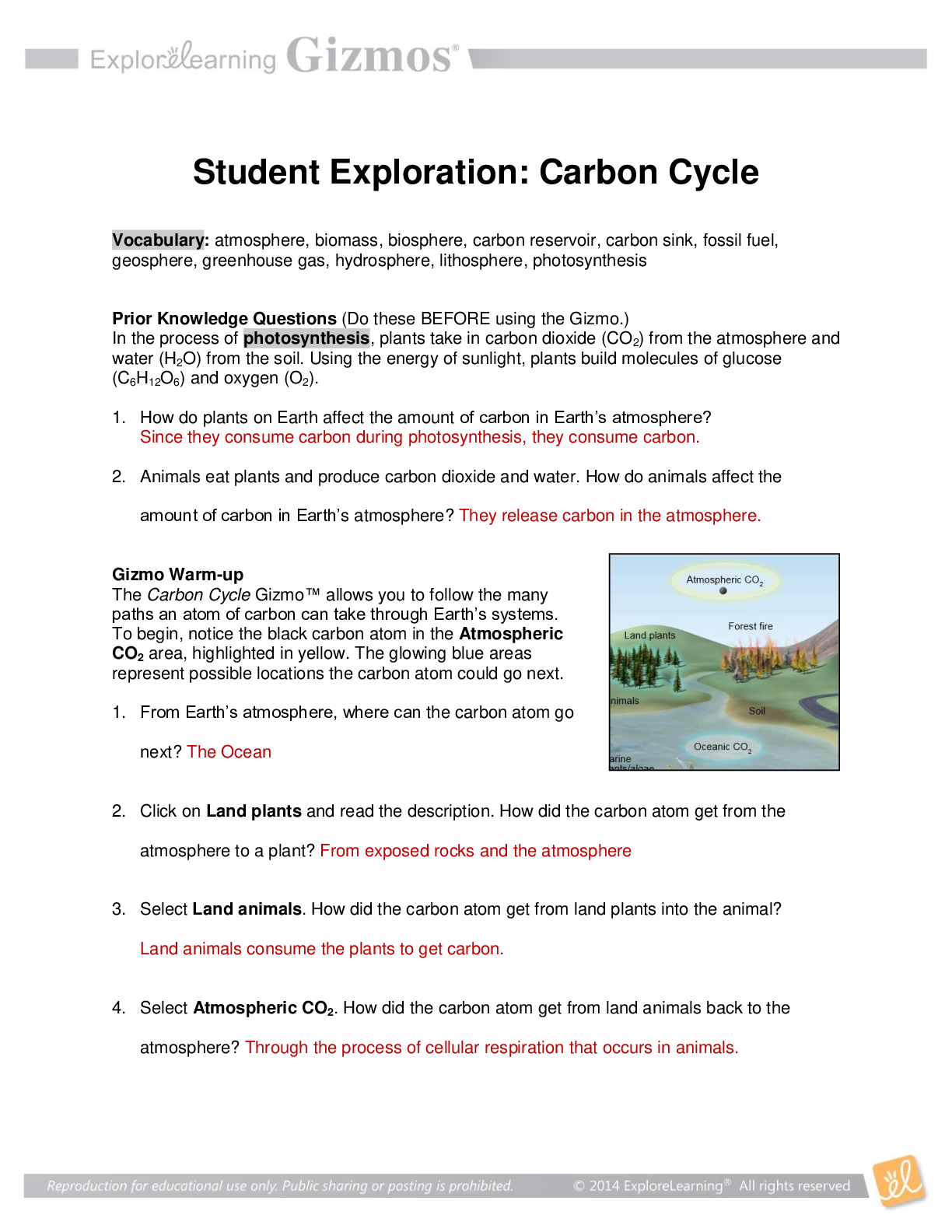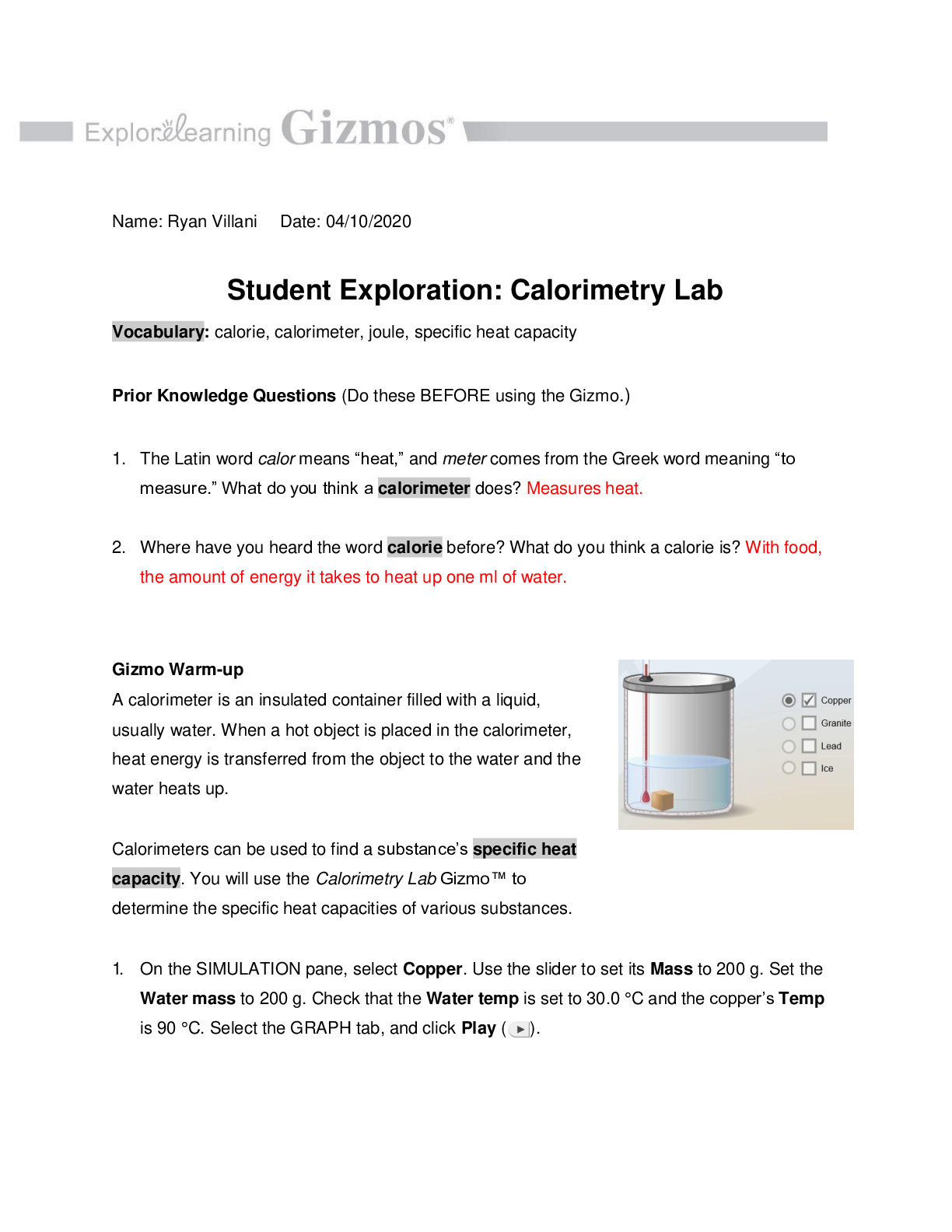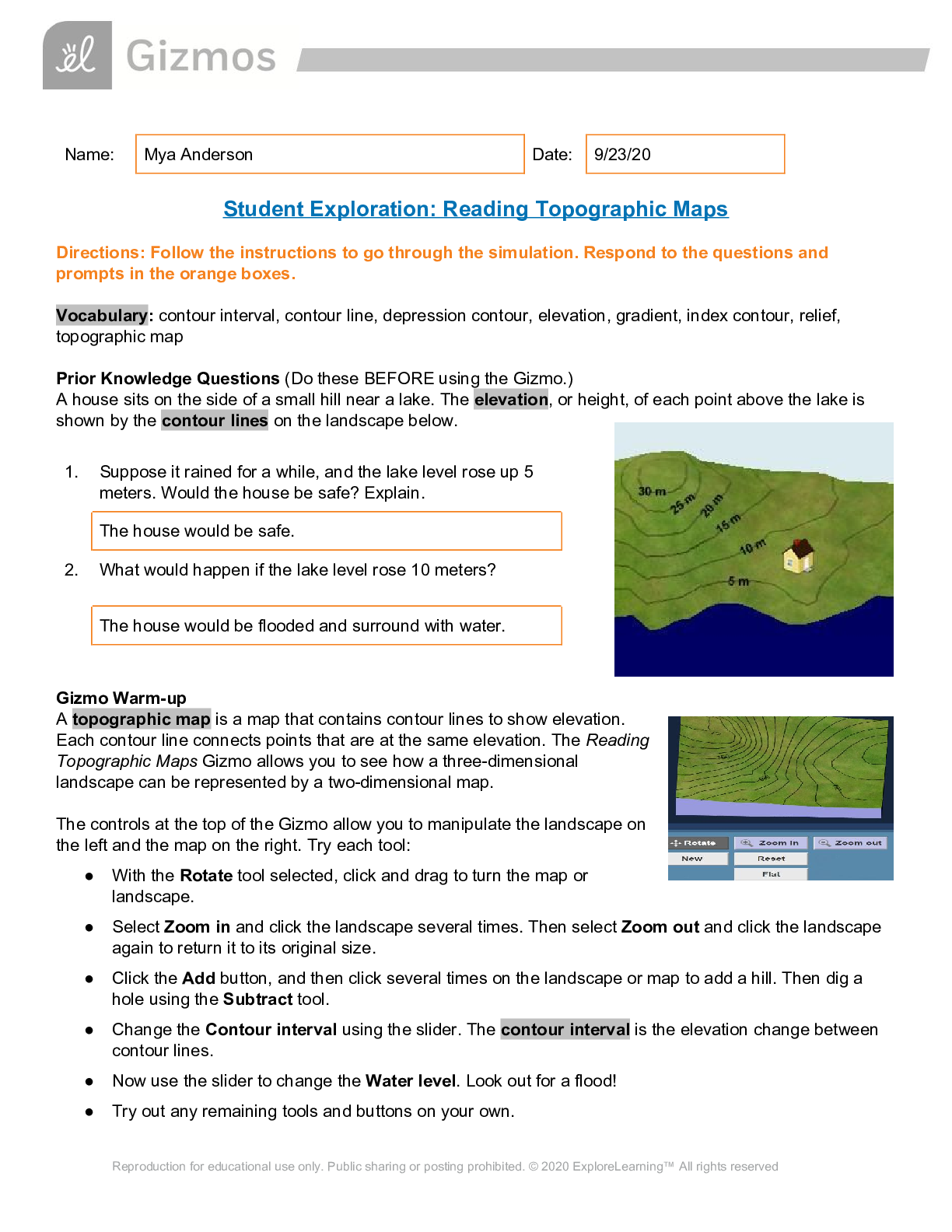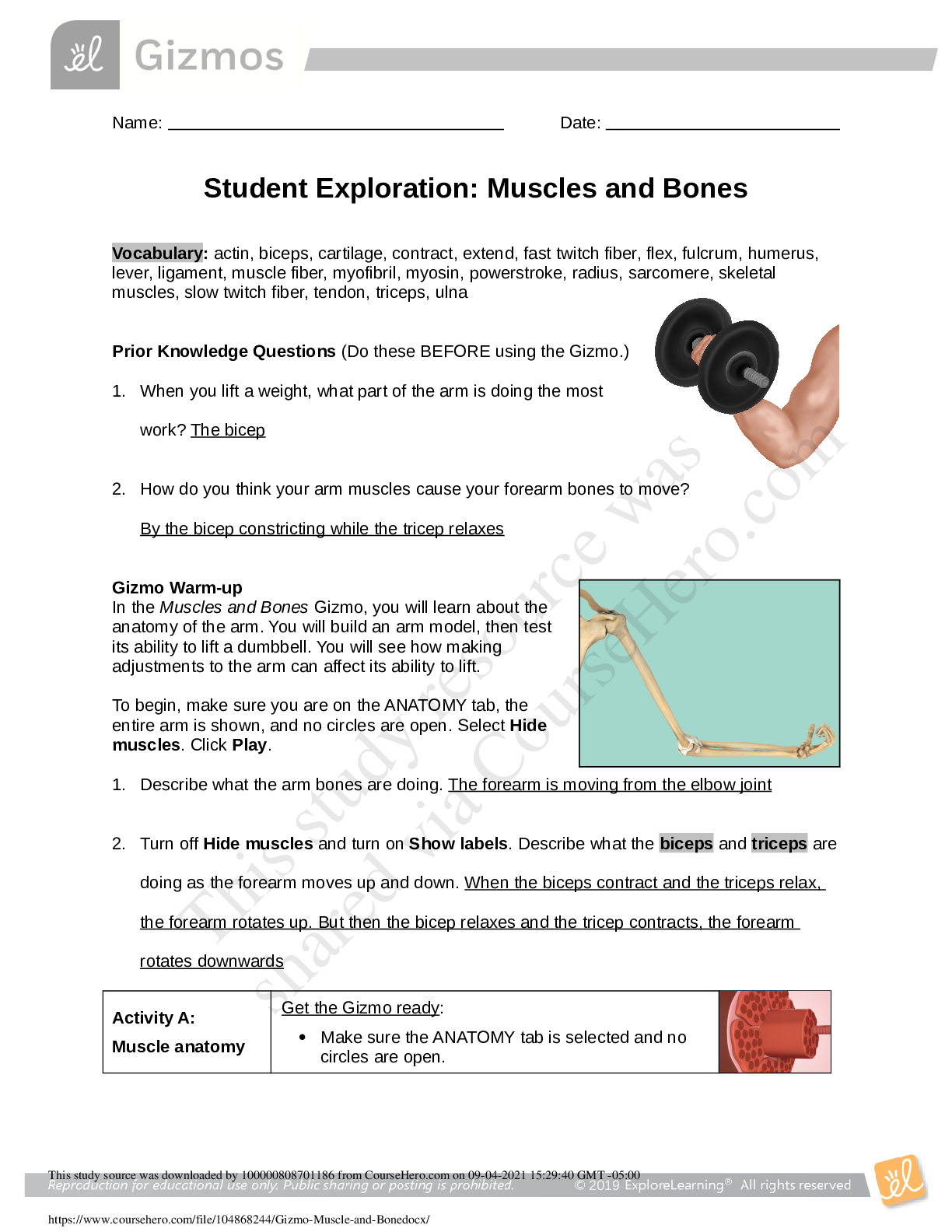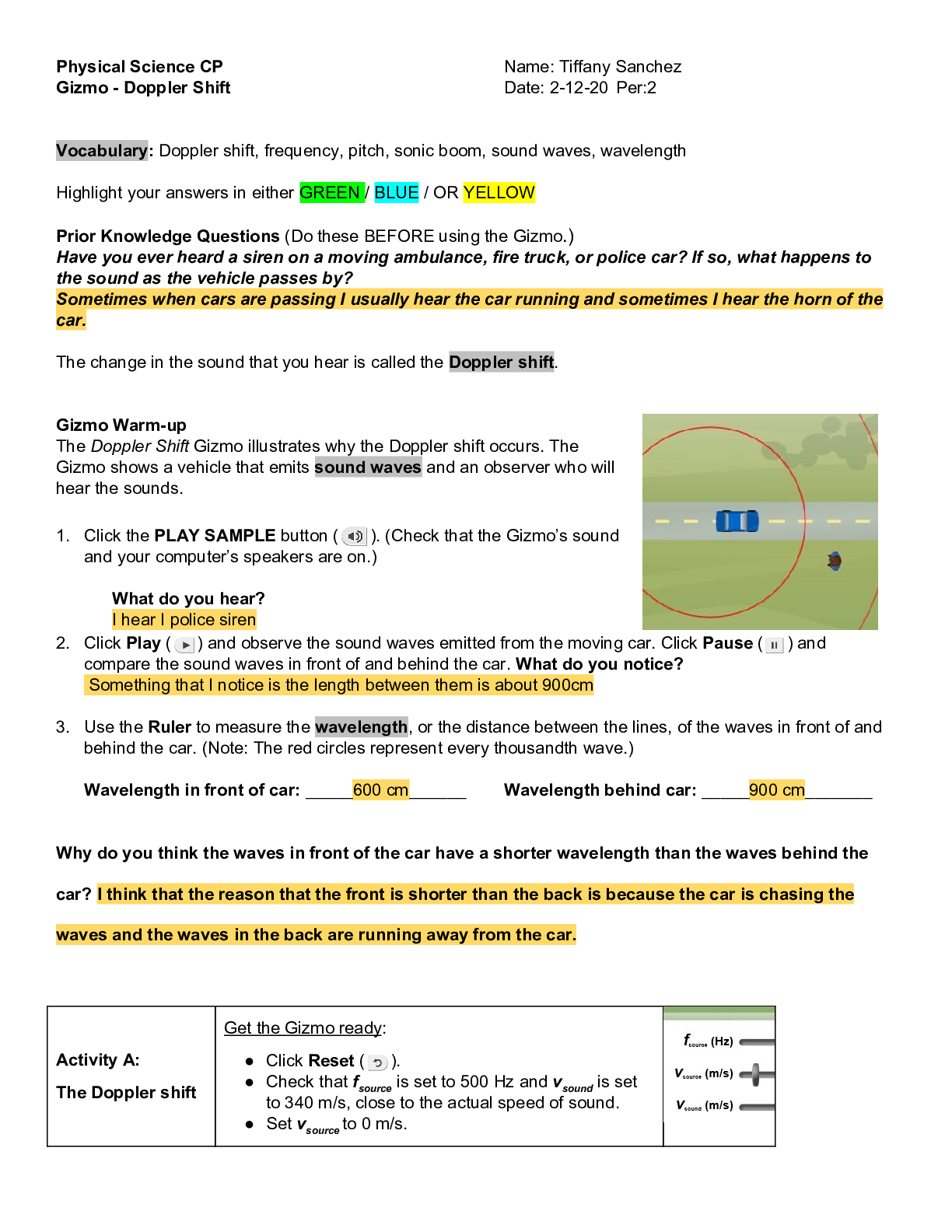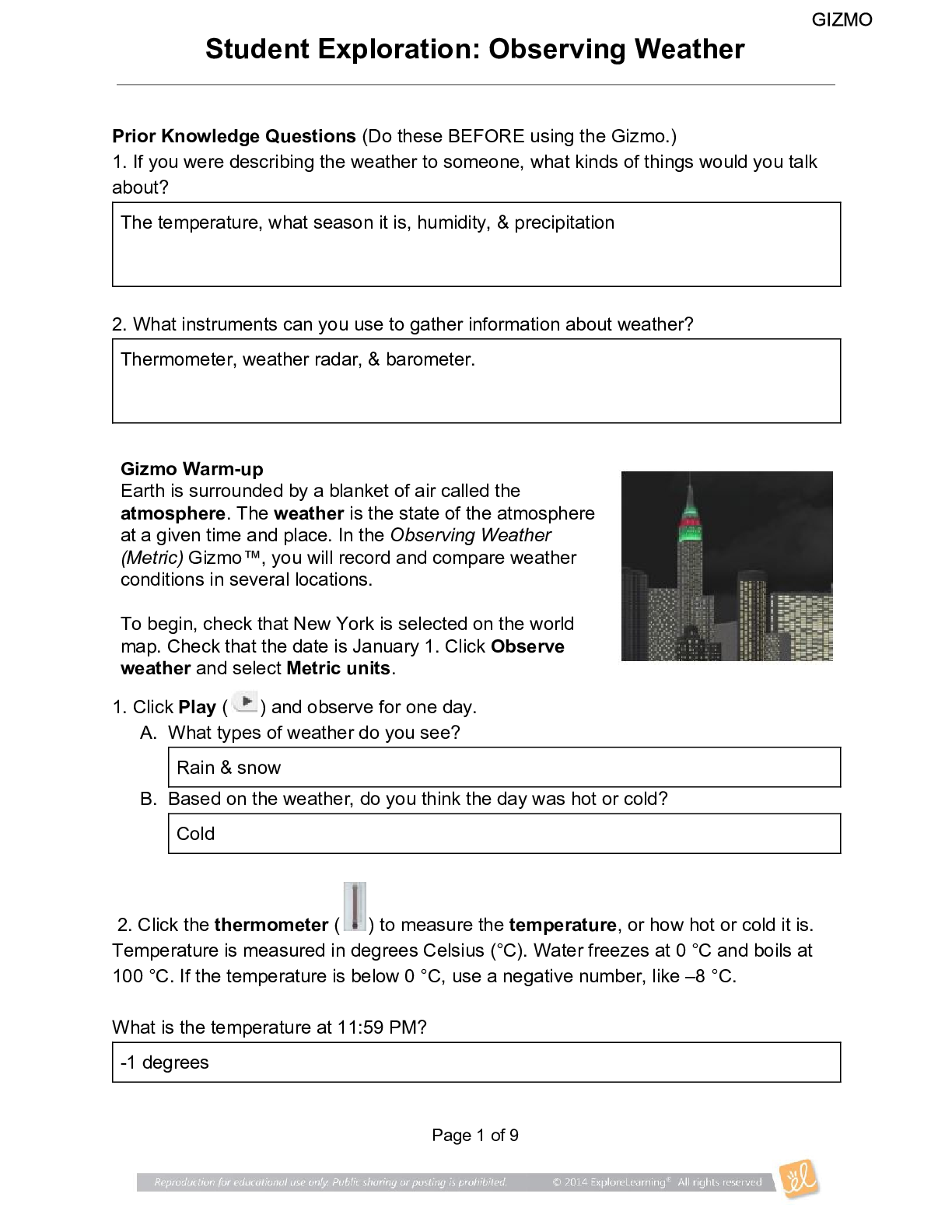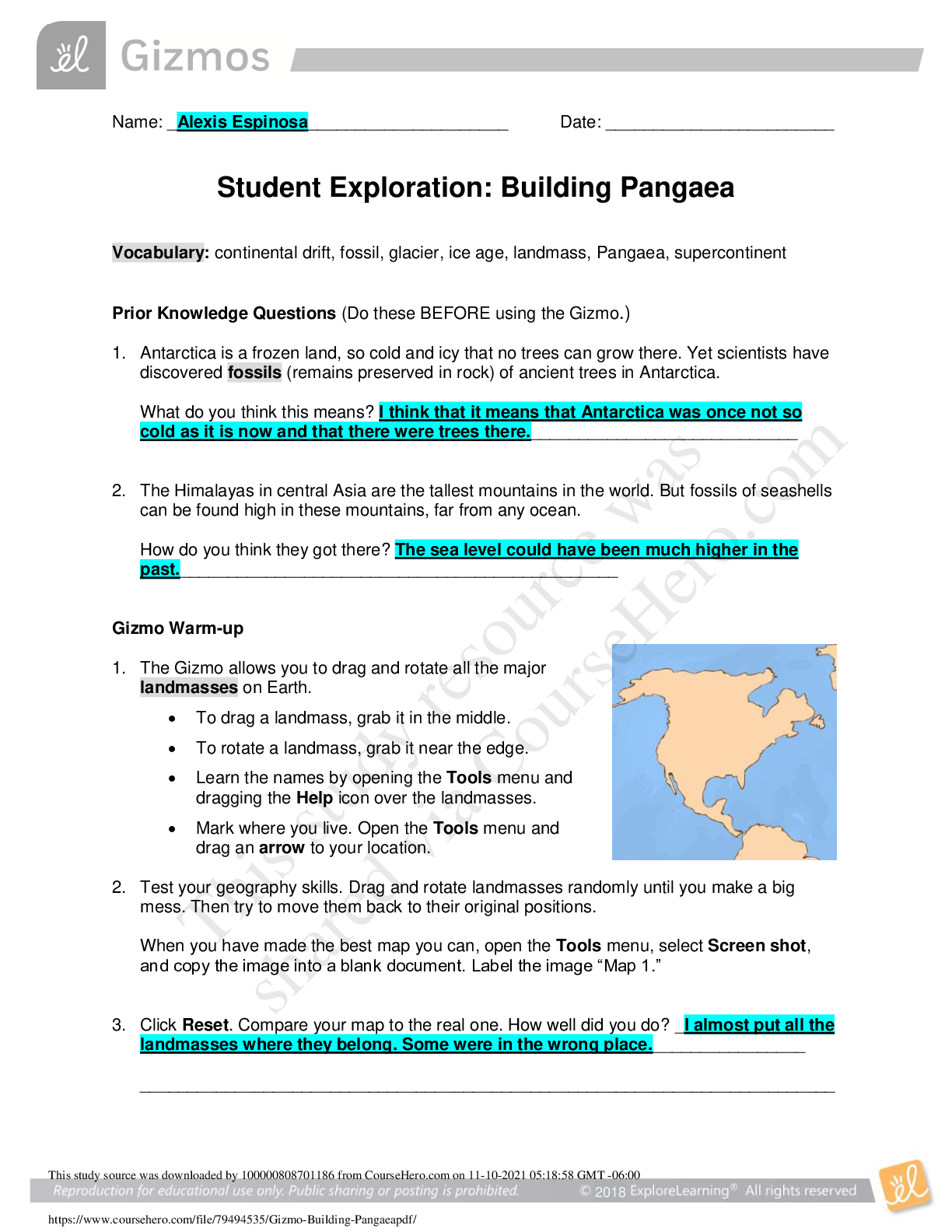Student Exploration: Moles Gizmos
Document Content and Description Below
Name: Date: LAB#5 Moles Gizmos Student Exploration: Moles Directions: Follow the instructions to go through the simulation. Respond to the questions and prompts in the orange boxes. Vocabulary ... : atomic mass, Avogadro constant, conversion factor, dimensional analysis, mole, molar mass, molecular mass, scientific notation, significant figures, unified atomic mass unit Prior Knowledge Questions (Do these BEFORE using the Gizmo.) 1. In the image to the right, note a dozen eggs, a dozen donuts and a dozen roses. How many of each item do you have? 2. Would a dozen of each object have the same mass? 3. Suppose you have a dozen carbon atoms, a dozen gold atoms, and a dozen iron atoms. Even though you have the same number of each, would you expect them all to have the same mass? Explain. Gizmo Warm-up When counting roses, eggs, or donuts, a dozen is a good unit to use. If you are counting atoms, however, a dozen is not much help. In the Moles Gizmo, you will learn about a unit used to count atoms. On the AVOGADRO CONSTANT tab, place the copper (Cu) atom on the nano-balance on the left, which will show the average atomic mass of copper rather than the mass of a single copper atom. 1. What is the average mass of a copper atom? The unit “u” refers to unified atomic mass units. A single proton or neutron has a mass of approximately one atomic mass unit. (Officially, 1 u is one-twelfth the mass of a C-12 atom.) 2. To gain an idea as to how many atoms are in a gram or so of copper, use the larger balance on the right. Press Add atoms to put a scoop of atoms in the weighing dish, and keep adding until the balance registers between 1 and 2 grams. If you don’t seem to be making much progress, adjust the exponent using the slider, which will make the scoop size bigger. How many atoms did you need to add? Activity A: Molar Mass Get the Gizmo ready: ● Select the AVOGADRO CONSTANT tab. ● Turn on Show hints and check that Copper (Cu) is selected. Introduction: Since atoms are so tiny, chemists have devised a unit known as the mole. A mole represents a macroscopic quantity of matter that can be used in the laboratory. One mole of any element has the same mass in grams as its atomic mass in u. Question: How many particles are in a mole? 1. Explore: Note the average atomic mass of copper on the nano-balance. Add atoms to the larger balance until it registers the same number (in g) as the reading on the nano-balance (in u). Use the Exponent slider to help get the correct amount. Stop adding atoms when the readings on both balances match exactly (to the nearest 0.001 g). How many atoms did you need to add? 2. Explore: Repeat the same procedure with carbon, then sulfur and aluminum. A. For each element, how many atoms did you need to add? B. What do you notice about the number of atoms in one mole? 3. Discover: In each case, you measured out one mole of atoms, since the mass of one mole of any element, in grams, is equal to its atomic mass, in u. One mole of any element contains the same number of atoms, a number known as the Avogadro constant. What is the exact value of the Avogadro constant? 4. Illustrate: The Avogadro constant is so large it is normally written in scientific notation. To get an idea of the enormity of the Avogadro constant, write it out in standard form. (You will need to move the decimal place to the right 23 times, so you will need to add a lot of zeros!) 5. Compare: While the number of atoms in a mole is constant, the number of grams in a mole changes based on the element. The number of grams in a mole (g/mol) is known as its molar mass, and has the same numerical value as an element’s atomic mass (in u). Use the Gizmo to find the atomic and molar mass of the following elements. Use proper units. S: Atomic mass Molar mass Al: Atomic mass Molar mass 6. Experiment: Select Copper(I) oxide, Cu2O. Note that Cu2O is a compound composed of different types of atoms bonded together. Place the Cu2O molecule on the nano-balance. A. What is the molecular mass of Cu2O? B. Add molecules to the larger balance until its reading matches that of the nano-balance exactly. How many molecules did you need to add? C. Repeat the above procedure with another molecule of your choice. How many molecules did you need to add? 7. Summarize: Complete the following statements: A. 1 mole of any element contains 6.0221 × 1023 B. 1 mole of any compound contains 6.0221 × 1023 8. Extend: For compounds, it is sometimes necessary to calculate the number of atoms of each element within a molecule. Select Iron(II) chloride. Note the image of the molecule. A. How many Fe atoms are within a single FeCl2 molecule? B. How many Cl atoms are within a single FeCl2 molecule? C. Use the nano-balance to find the mass of each of these atoms: Mass of Fe atom: Mass of Cl atom: D. Find the sum of their masses (1 Fe atom + 2 Cl atoms): E. Place the FeCl2 molecule on the balance. Is the sum of the masses of the individual atoms equal to the molecular mass of the compound? 9. Calculate: Select Copper(I) oxide. Note the image of the molecule. Place it on the balance. ...................................................................................continued................................................................................................ [Show More]
Last updated: 3 years ago
Preview 1 out of 8 pages
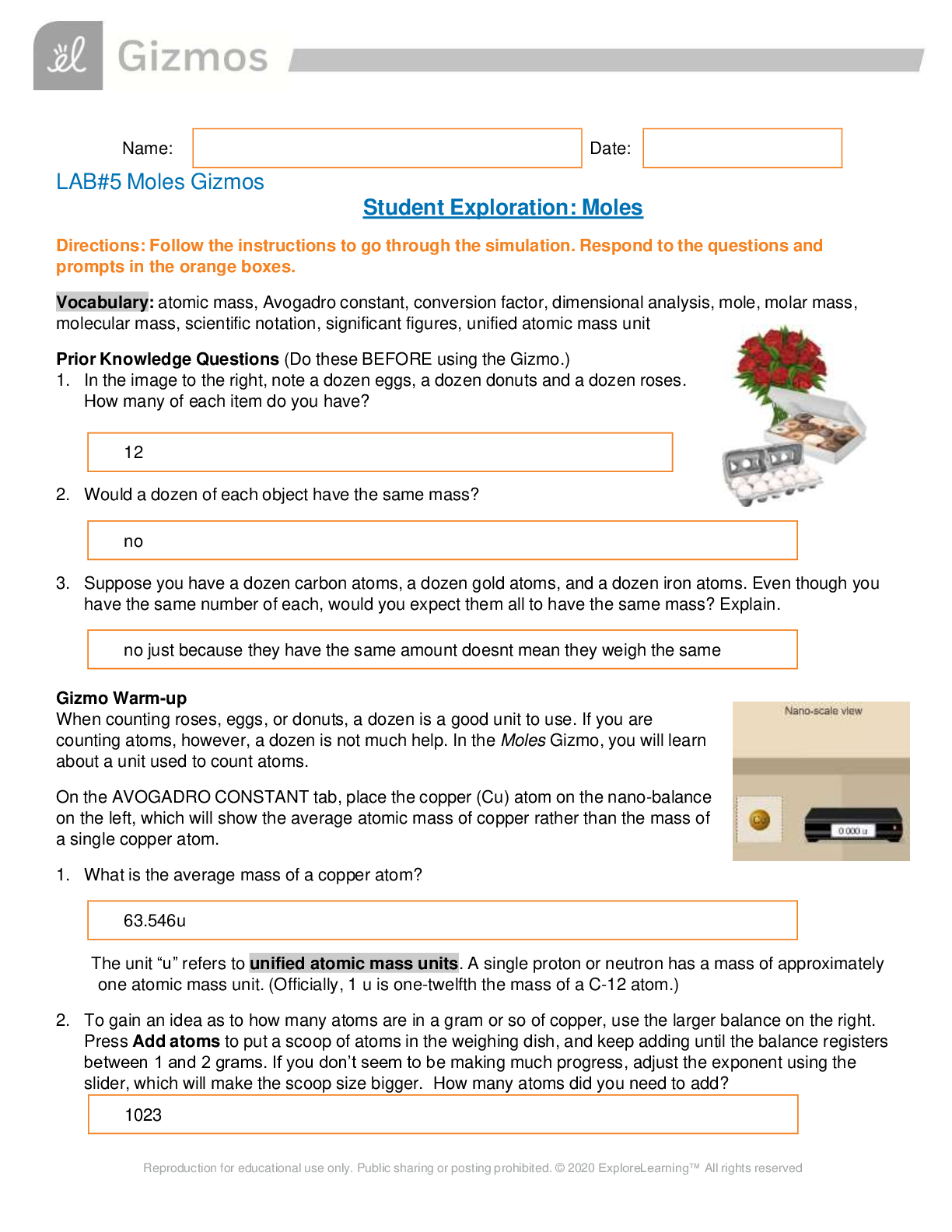
Buy this document to get the full access instantly
Instant Download Access after purchase
Buy NowInstant download
We Accept:

Reviews( 0 )
$6.50
Can't find what you want? Try our AI powered Search
Document information
Connected school, study & course
About the document
Uploaded On
Aug 16, 2021
Number of pages
8
Written in
All
Additional information
This document has been written for:
Uploaded
Aug 16, 2021
Downloads
0
Views
279

